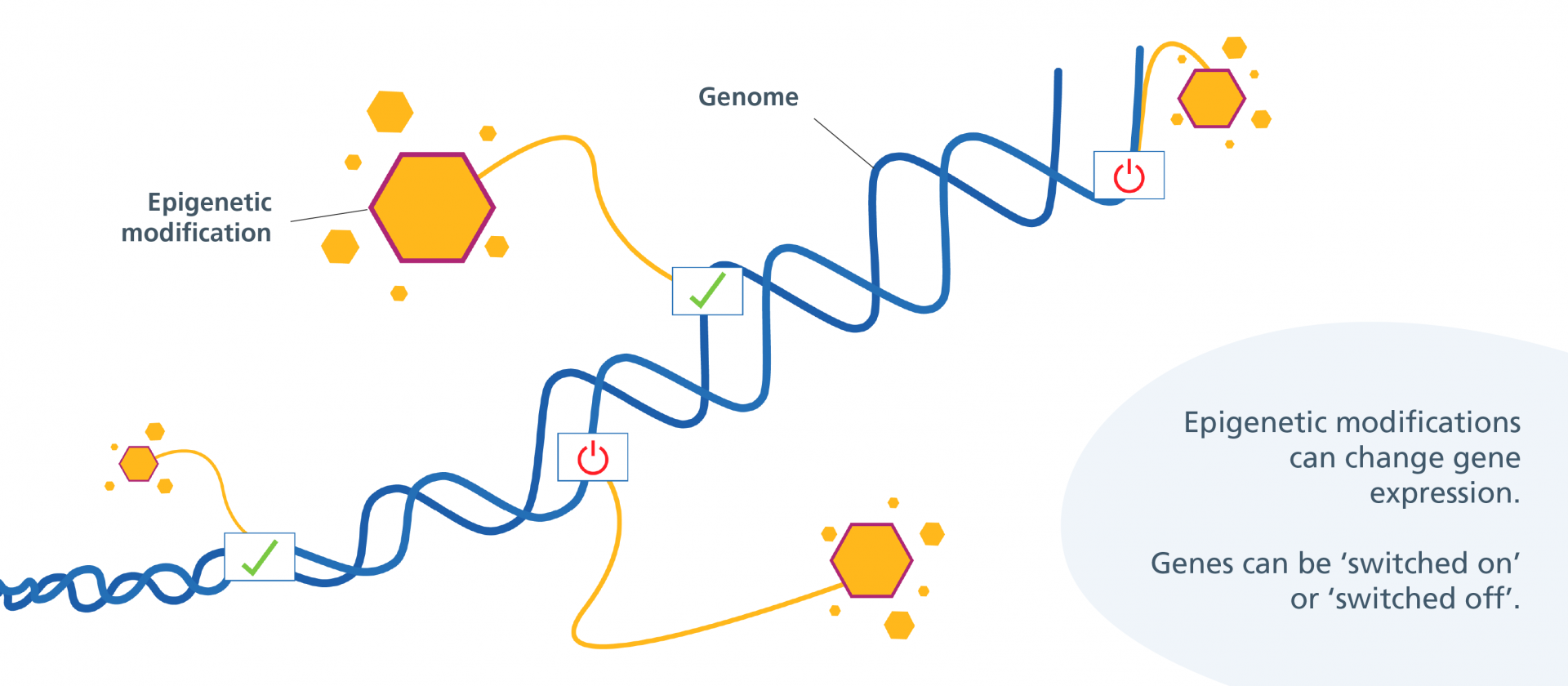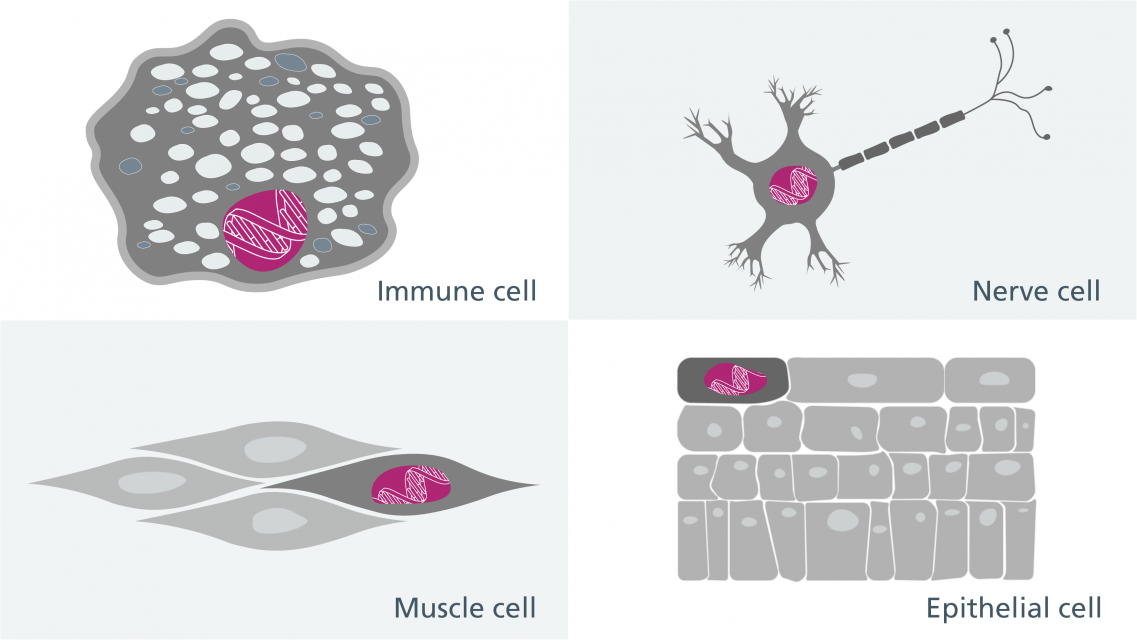Many different forms of epigenetic modification take place in, or ‘tag,’ an organism’s genome. – see the gallery below.
The most researched epigenetic modification is DNA methylation, which acts like a dimmer switch, altering gene expression. A chemical called a methyl group attaches to a region near the start of a gene and prevents it from being expressed or reduces expression. For example, methylation of one of the two X chromosomes in every female cell is inactivated during embryonic development. X-chromosome inactivation stops female cells from having twice as many X chromosome gene products as male cells. Hypermethylation often occurs, inhibiting gene expression, but hypomethylation can also occur, resulting in the opposite effect.
Another modification known as chromatin remodelling can alter how tightly the DNA is packaged in the chromosomes, relaxing the tightly packed chromosomes to allow the transcription factors which control gene expression access to the genes within.
Another type of epigenetic modification degrades (breaks down) the messenger RNA (mRNA) created when DNA is copied by the cell – a process called transcription. Here, non-coding RNA (a type of RNA that does not code for proteins) attaches to the mRNA and marks it for degradation.
Most epigenetic modifications are transient and reversible, allowing our cells to respond and adapt to changes in environment and behaviour. Although they happen on a molecular level, they can have a considerable impact on us and can also be influenced by external factors, such as diet and lifestyle.
Without epigenetics, you wouldn’t have developed from a fertilized egg to the multicellular organism you are today – and epigenetics will continue to impact on you, regulating specific genes in specific cells, in specific places and at specific times during your growth and development.
Image slider – text version




